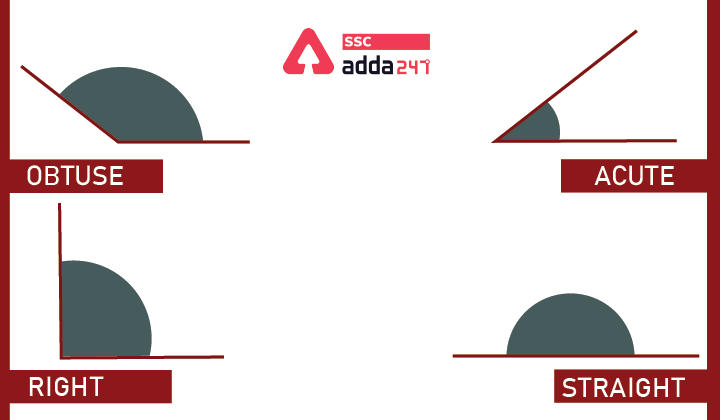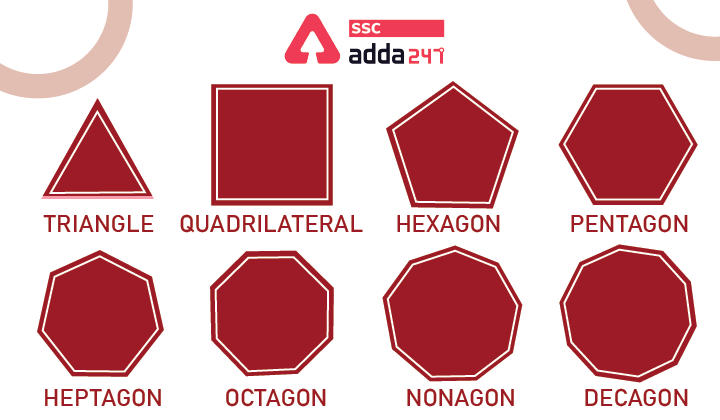Geometry
Geometry: Since the beginning of human society, the importance of shapes, sizes, directions and angles of the components of the environment that surrounds us has been very high. Geometry is one of the oldest branches of mathematics which deals with the size, shapes, angles, and dimensions of things. One of the earliest uses of geometry was seen when the early humans traced the direction of their travel by referring to the positions and angles of the stars and the sun. Geometry deals with the things which are used in daily life. Geometry includes 2D as well as 3D shapes i.e 2 dimensional and 3-dimensional shapes.
In-plane geometry, 2d shapes such as triangles, squares, rectangles, and circles are also called flat shapes. In solid geometry, 3d shapes such as a cube, cuboid, cone, etc. are also called solids. The basic geometry is based on points, lines, and planes which come under coordinate geometry.
In this article, we are providing you the detailed information about geometry, geometry shapes, and geometry formulas. Understanding geometry will help candidates to solve the problems related to that and asked in the competitive exams.
Geometry Definition
Geometry word is derived from Ancient Greek words – ‘Geo’ means ‘Earth’ and ‘metron’ means ‘measurement’. It can also be traced back to the Sanskrit word ‘Jyamiti’. Geometry is concerned with properties of space that are related to distance, shape, size, and relative position of figures. The basics of geometry depend majorly on points, lines, angles, and planes.
What are the Branches of Geometry?
There are various uses of Geometry in daily life. It ranges from choosing the right size of any item to planning highly sophisticated space missions. Depending upon these applications, geometry can be classified in various branches. The branches of geometry are as follows:
- Algebraic geometry
- Discrete geometry
- Differential geometry
- Euclidean geometry
- Coordinate geometry
- Convex geometry
- Topology
Plane Geometry (2D Geometry)
Plane Geometry means flat shapes that can be drawn on a piece of paper. These include lines, circles & triangles of two dimensions. Plane geometry is also known as two-dimensional geometry which utilizes two coordinates in any space i.e. X and Y axis. Examples of 2D Geometry is square, triangle, rectangle, circle, lines, etc. Here we are providing you with the properties of the 2D shapes below.
Point
A point is a location or place on a plane. A dot usually represents them. It is important to understand that a point is not a thing, but a place. The point has no dimension and it has the only position. This position is also known as coordinates.
Line
The line is straight with no curves), has no thickness, and extends in both directions without end infinitely. It can be seen as a collection of points adjacent to each other. Almost all the shapes in geometry make use of lines and points. For example, shapes such as angles, triangles, rectangles, pentagons, and so on are made up using a collection of lines joined with each other.
Angles in Geometry
Angles are formed by the intersection of two lines called rays at the same point. which is called the vertex of the angle. It is utilized in the formation of a triangle, rectangle or more complex figures. These angles are of various types such as acute, right, obtuse and reflex. In the next section let us look at these in detail.
Types of Angle
- Acute Angle – An Acute angle is an angle smaller than a right angle ie. it can be from 0 – 90 degrees.
- Obtuse Angle – An Obtuse angle is more than 90 degrees but is less than 180 degrees.
- Right Angle – An angle of 90 degrees.
- Straight Angle – An angle of 180 degrees is a straight angle, i.e. the angle formed by a straight line.
- Reflex Angle – These angles are greater than 180 degrees but less than 360 degrees.

Polygons
A polygon is an unrestricted shape figure that has a minimum of three sides and three vertices. The term‘ poly’ means’ numerous‘ and’ gon’ means’ angle‘. Therefore, polygons have numerous angles. The border and area of a polygon depend upon its type. The distribution of polygons is described as grounded on the figures of sides and vertices.
Types of Polygons
The types of polygons depending upon the number of sides and vertices are:
- Triangles
- Quadrilaterals
- Pentagon
- Hexagon
- Heptagon
- Octagon
- Nonagon
- Decagon

We have discussed the property as well as examples of the polygons with their properties in the below table. These figures will help candidates prepare for geometry for various competitive exams.
| Polygon Type | Sides, Vertices and Angles | Salient Features |
| Triangle | A 3-sided polygon whose sum of internal angles always sums to 180 degrees. |
|
| Quadrilateral | A 4-sided polygon with four edges and four vertices with a sum of internal angles is 360 degrees |
|
| Pentagon | A plane figure with five straight sides and five angles |
|
| Hexagon | A plane figure with six straight sides and six angles |
|
| Heptagon | A plane figure with seven sides and seven angles |
|
| Octagon | A plane figure with eight straight sides and eight angles. |
|
| Nonagon | A plane figure with nine straight sides and nine angles. |
|
| Decagon | A plane figure with ten straight sides and ten angles. |
|
Geometry Formulas
Every geometry shape and figure has its own formula for the area and perimeter. This is important for the candidates to solve various questions asked in the geometry section in the Quantitative Aptitude section of Competitive exams. These formulas are also used while solving many questions in the Reasoning section as well. Some of the most important Geometry formulas are tabulated below.
| Shape | Area | Perimeter |
| Rectangle (l= Length and b= breadth) | (l*b) | 2(l+b) |
| Square (a is the side of the square) | a2 | 4a |
| Triangle (a,b and c are sides of the triangle) | 1/2 (b × h) [where b is the length of the base and h is the length of the height of the triangle] | a + b +c |
| Circle (r = radius) | πr2 | 2πr (Circumference of Circle) |
| Parallelogram (a = side, b=base ,h=vertical height) | A = b × h | P = 2(a+b) |
Geometry Shapes and Formulas: FAQ
Q. What is the area of Triangle?
Ans: The area of a triangle is 1/2( b × h) where b is the base and h is the height of the traingle.
Q. What are the types of angles?
Ans: These are 5 types of angles,i.e. acute, obtuse, right, straight and reflex angle.
Q. What is Geometry?
Ans: Geometry is a branch of mathematics that deals with shapes, angles, dimensions, and sizes.
Source link


